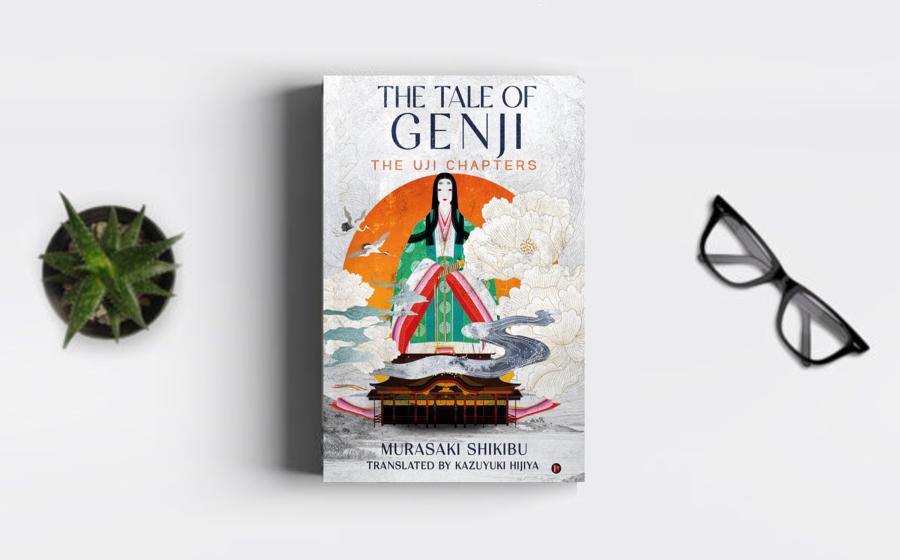"The Tale of Genji," written by the Japanese author
Murasaki Shikibu in the early 11th century, is a
literary gem that stands as a time-tested epic of
profound beauty and cultural significance. Often
regarded as the world's first novel, this masterpiece
unfolds the intricate tapestry of the Heian period in
Japan, capturing the essence of courtly life, human
relationships, and the complexity of emotions. As a work
that has endured over a millennium, "The Tale of Genji"
continues to captivate readers with its timeless
exploration of love, human psychology, and the delicate
nuances of the human experience.
At its heart,
"The Tale of Genji" is a narrative that follows the life
and romantic exploits of Hikaru Genji, a fictional
prince and courtier. The tale begins with Genji's birth
and traces his journey through the intricate web of
Heian-era court life, detailing his relationships with
various women, his political endeavors, and his
reflections on the transience of life. The narrative
unfolds over 54 chapters, each capturing a moment in
Genji's life and the lives of those around him.
The enduring allure of "The Tale of Genji" lies in its
exquisite portrayal of courtly life during the Heian
period, a time when the aristocracy immersed themselves
in aesthetic pursuits, poetry, and the intricacies of
relationships. Murasaki Shikibu's keen observations and
intimate knowledge of court culture provide readers with
a rich and detailed tapestry of the Heian court,
allowing them to step into a world where poetry, beauty,
and the art of conversation were paramount.
One
of the key elements contributing to the time-tested
nature of "The Tale of Genji" is its exploration of the
complexities of human relationships, particularly love.
Genji's amorous adventures, his deep emotional
connections, and the challenges posed by societal norms
offer a timeless exploration of the multifaceted nature
of love. Murasaki Shikibu delves into the subtleties of
human emotions, portraying characters who grapple with
desire, jealousy, and the impermanence of romantic
attachments.
The theme of impermanence, or "mono
no aware" (the beauty of transience), is a central
aspect of "The Tale of Genji" that resonates across
cultures and epochs. The Heian court's appreciation for
the fleeting beauty of life and the melancholy awareness
of its impermanence infuse the narrative with a poignant
depth. Genji, despite his many successes and romantic
conquests, grapples with the inevitability of change and
loss, echoing universal truths about the ephemeral
nature of human existence.
Murasaki Shikibu's
meticulous character development adds to the epic's
enduring appeal. Genji himself is a multifaceted
character, embodying the ideals and flaws of the
aristocratic society in which he thrives. His
intellectual pursuits, poetic talents, and charisma are
juxtaposed with moments of vulnerability, self-doubt,
and the consequences of his actions. The nuanced
portrayal of Genji as a complex and evolving individual
ensures that readers can connect with his humanity,
making the epic a timeless exploration of the human
condition.
The evocative use of language and
poetic imagery elevates "The Tale of Genji" to the
status of a literary masterpiece. Murasaki Shikibu's
prose is imbued with a lyrical quality, enriched by her
background as a lady-in-waiting at the Heian court. Her
mastery of classical Japanese literature and poetic
conventions is evident in the eloquence of her
expressions, the vivid descriptions of landscapes, and
the incorporation of traditional poetry within the
narrative. The aesthetics of language contribute to the
timeless beauty of the epic, making it a work of art
that transcends cultural and temporal boundaries.
The narrative structure of "The Tale of Genji"
further contributes to its time-tested nature. Rather
than following a linear plot, the epic unfolds
episodically, capturing moments in Genji's life and
those of the people around him. This cyclical structure
mirrors the cyclical nature of life and relationships,
creating a narrative rhythm that resonates with readers
across different periods. The episodic nature of the
tale allows for a deep exploration of characters and
themes, fostering a sense of immersion in the world of
Heian Japan.
The influence of "The Tale of Genji"
on subsequent Japanese literature and culture is
profound, solidifying its place as a cultural
touchstone. Countless adaptations, reinterpretations,
and artistic representations have emerged over the
centuries, including Noh and Kabuki theater, visual
arts, and contemporary literature. The characters of
Genji and Murasaki have become archetypal figures in
Japanese culture, symbolizing the complexities of human
relationships and the pursuit of aesthetic ideals.
The epic's role as a mirror reflecting societal
norms and expectations during the Heian period
contributes to its enduring relevance. Murasaki Shikibu
skillfully addresses issues of gender, class, and the
constraints of courtly life, offering a nuanced critique
of the societal structures that shaped the lives of her
characters. The resonances with the challenges faced by
individuals in navigating societal expectations make
"The Tale of Genji" a work that transcends its
historical context.
The concept of mono no aware,
coupled with the theme of "utsusemi" (the shell of the
cicada, symbolizing the emptiness after something
beautiful has passed), permeates the narrative with a
sense of wistfulness and melancholy. This emotional tone
resonates with readers on a deep level, evoking a shared
understanding of the transient and fragile nature of
human experience. The emotional resonance and universal
themes ensure that "The Tale of Genji" continues to be
appreciated as more than a historical artifact but as a
profound exploration of the human soul.
"The Tale of Genji" stands as a time-tested epic that transcends the confines of its historical origins to become a masterpiece of world literature. Murasaki Shikibu's lyrical prose, rich characterizations, and exploration of universal themes ensure its enduring appeal. As a cultural treasure that reflects the beauty and complexities of the Heian period.






